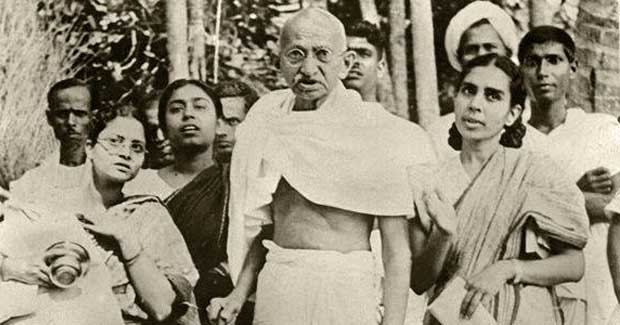Gandhiji’s Love For Pakhala

Bhubaneswar: The traditional pakhala (fermented rice), the most loved Odia dish, had an admirer in Mahatma Gandhi as well. During a visit to Odisha in 1935 to undertake a Harijan padayatra from Puri, Gandhi could not hide his admiration for the dish. Noted writer Dash Benhur said Gandhi would enquire more about Pakhala and its preparation from Ramadevi Choudhury (Rama Devi) who was among the hundreds of followers participating in the padayatra. He was curious and equally delighted seeing Rama Devi serve it to followers on a hot May afternoon during the course of the journey.
He was deeply touched by the Odia culture and the people. His humility and the ease with which he could connect with them endeared him to one and all. “He was probably one of the first celebrated Indians who had declared his love for Pakhala,” Benhur said at the TATA Steel Bhubaneswar Literary Meet here.
Gandhi was revered by the masses. He came to Odisha at least eight times between 1921 and 1946, and each time he visited — he would leave an indelible mark among different sections of society. He carried a ‘God-like’ image, a characteristics which made a good business proposition for some as well. “Once after a meeting on the banks of the Kathjodi in Cuttack, a listener collected sand on which the Mahatma had sat and made a fortune selling it,” said Prof of History Jatindra Nayak of Utkal University.
The session titled ‘Gandhi in Odisha at Tata Steel Bhubaneswar Literary Meet at XIMB here on Saturday was made lively with such fascinating anecdotes the panelists shared that captured Gandhi’s tryst with Odisha and its people. History would remain incomplete if these stories remain out of textbooks.
Through their stories and vivid descriptions of Gandhi’s travel to Odisha, the speakers, who also included bi-lingual poet and translator Sangram Jena, seemingly ferried the audience to a time when India was at awe with the Mahatma.
Revolutionary Gobinda Chandra Mishra was the first Odia who met Gandhi at Sabarmati Ashram and took refuge under him, having escaped the British atrocity back in Daspalla. Gandhi also made it a point to send money to his poor family back home. In 1919, Gandhi sent him to Punjab where he served the victims of the Jalianwala Bagh massacre.
Gandhi would reply to all letter and extend financial support in whatever way possible to people who asked for his help. To a north Indian trader in Bhadrakh, who confessed his guilt, Gandhi suggested that he give back all money he made out of the poor. He also made arrangement of Rs 40 a month for a Hindi teacher who had come all the way to Bhadrakh to promote the language in Cuttack.
Benhur said Gandhi was averse to women wearing jewellery, the aspect of which became clear during his stay in Bhadrakh. “He asked a woman who had come bejewelled to meet him and to pull out all the jewellery as they accumulate dirt.”
His power lay in the simplicity with which he could effortlessly demystify complex societal issues for the people. “When a follower asked him during a padayatra as to what was sin, Gandhi drew his immediate attention to the roadside defecation and said this is sin,” Prof Nayak said.
Utkal Gourab Madhusudan Das and Utkalmani Pandit Gopabandhu Das had ideological differences when it came to creation of the Odisha State based on language but Gandhi would get on well with them. He stayed with them as family members, the penalists said. The session was moderated by Gourahari Das.

Comments are closed.